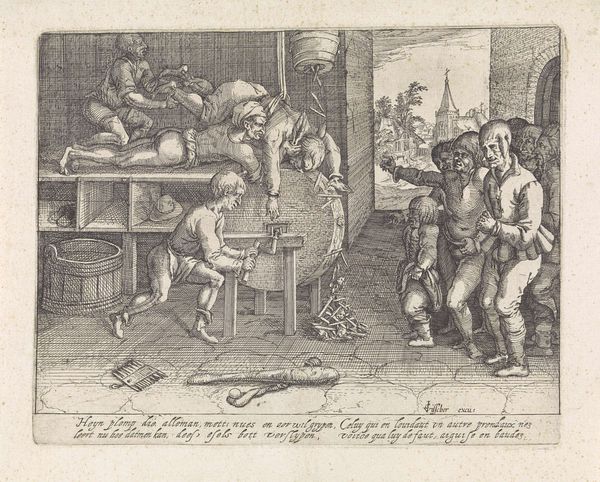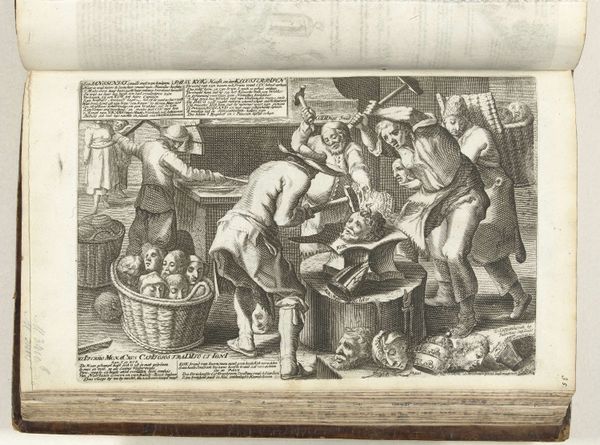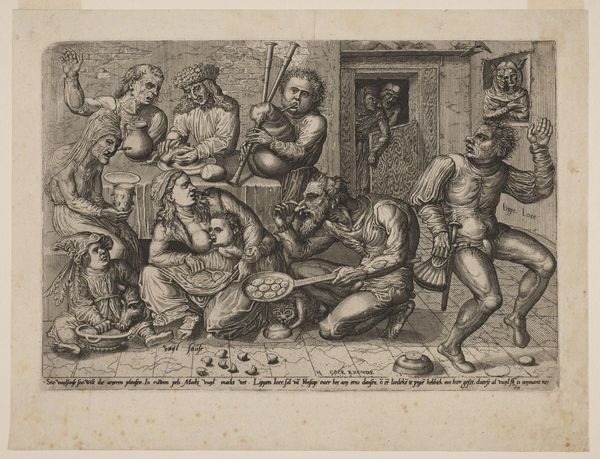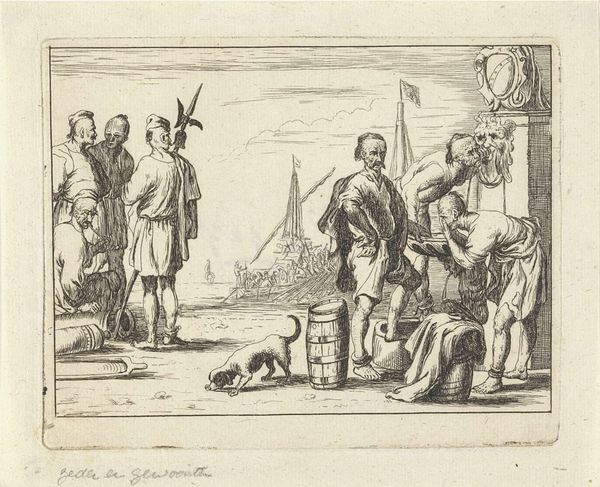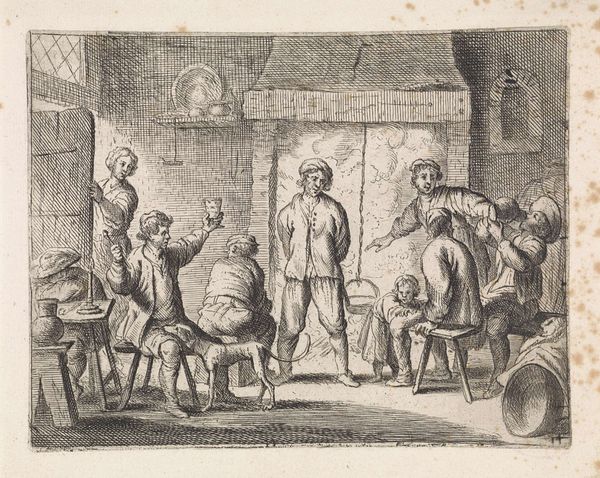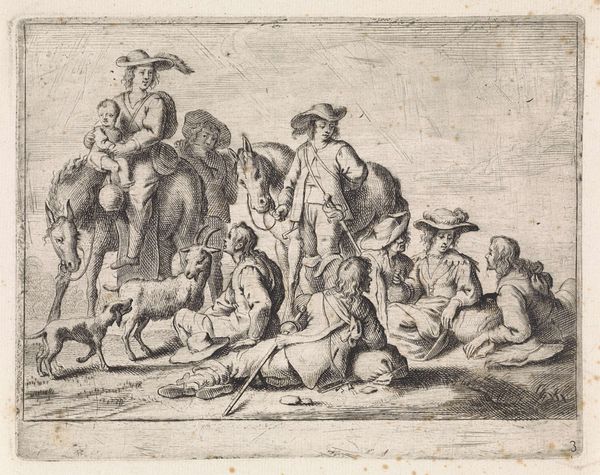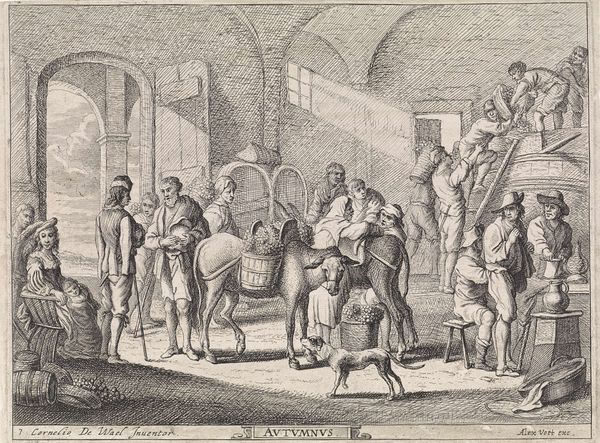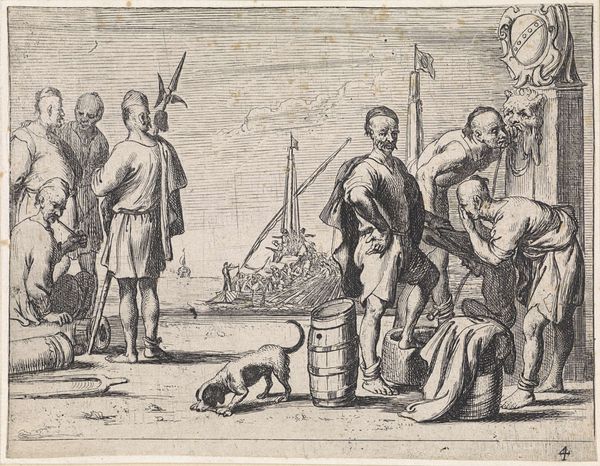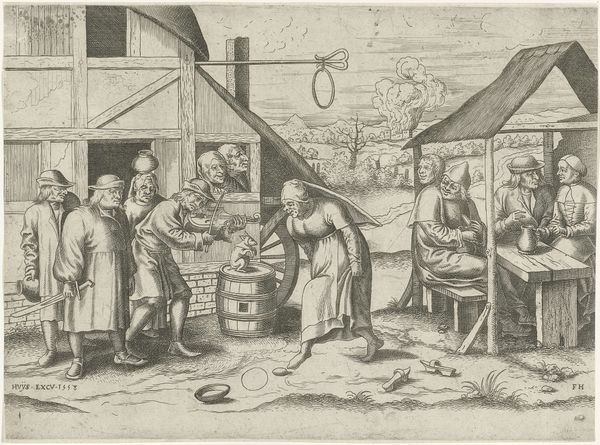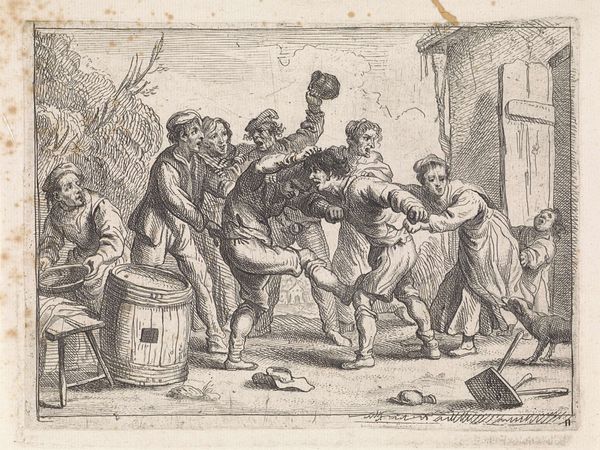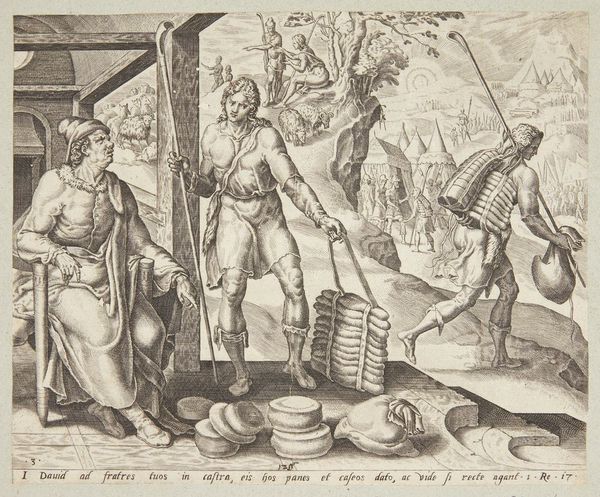
drawing, paper, ink, engraving
#
drawing
#
baroque
#
pen sketch
#
pencil sketch
#
landscape
#
figuration
#
paper
#
ink
#
pen-ink sketch
#
genre-painting
#
engraving
Dimensions: height 117 mm, width 148 mm
Copyright: Rijks Museum: Open Domain
Editor: This is "Islamitische galeislaven rond een put," or "Islamic Galley Slaves Around a Well," a pen and ink drawing by M. Schaep from 1649. It feels quite immediate, like a snapshot, even though it's almost four centuries old. What strikes you most when you look at it? Curator: I'm struck by the visual tension between labor and leisure, and what symbols tie those opposing forces together. Notice the well. It’s not simply a source of water; it's the focal point of both the grueling work being done and the camaraderie amongst these men. The well represents survival in a harsh environment, a common point around which shared identities and social structures arise, even within enslavement. Editor: So, the well acts as more than just a functional object? Curator: Precisely. Consider how the artist renders the ropes and buckets. They are tools of physical suffering but simultaneously instruments of shared humanity. Think of the symbolic weight water has always carried - cleansing, renewal, even baptism. Those meanings echo here. Even subjugated, these men are bound by communal experience. How do you interpret the figures gathered around the well’s perimeter? Editor: It’s interesting… they're observing, almost guarding the well, which reinforces your point about the well being a source of both conflict and community. It highlights the preciousness and perhaps contested nature of this shared resource. Curator: Indeed. Their gaze is significant. Remember, Baroque art often used light and shadow to depict drama. While this drawing lacks dramatic shading, the focused gazes act similarly, highlighting the well's central, symbolic importance in a parched world. Every mark seems imbued with layers of social commentary. Editor: I never considered the gazes themselves to be symbolic! Seeing those ordinary things like water and labour as potent symbols… it shifts my entire understanding of this drawing. Thanks! Curator: My pleasure. Now consider how similar depictions exist across various cultures and time periods. This image then becomes just one fragment of our shared history.
Comments
No comments
Be the first to comment and join the conversation on the ultimate creative platform.

